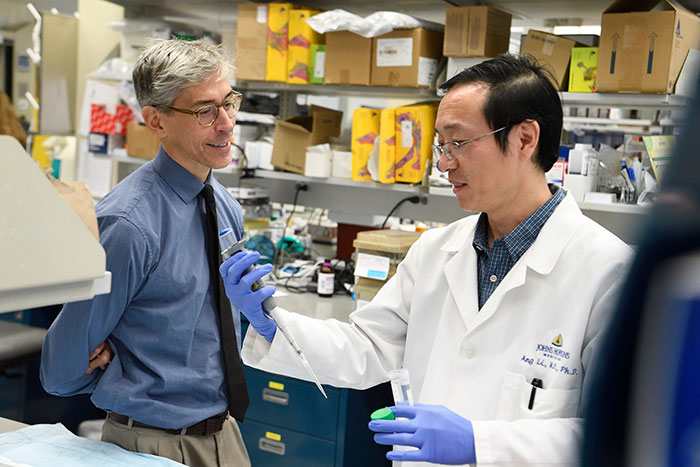USAMRDC Funds Novel Cell Therapy for Amputees

It only takes a few seconds into a conversation with Dr. Luis Garza to feel the gravitational pull. The energetic Associate Professor at the Johns Hopkins University School of Medicine in Baltimore, Maryland, speaks with such infectious verve that you'd think he's on stage at a rock concert or coaching the local football team to victory. Instead, he's got his sights set on the health of the U.S. Soldier – specifically, the human body's largest organ.
"Can we change the properties of human skin?" says Garza, the leader of the university's Veteran Amputee Skin Regeneration Program, asking a simple yet potentially revolutionary question. "That's what we wanted to know."
For Garza, those efforts are focused specifically on Soldiers who wear prosthetics as a result of injuries sustained in combat. In particular, he says, Soldiers injured by the types of improvised explosive devices (IEDs) used in recent conflicts in Afghanistan and Iraq face a greater burden when it comes to physical recovery. Many amputees complain the skin at their stump site – or, the site where the prosthesis is physically attached to the body – breaks down and feels generally uncomfortable, which ultimately leads to some Soldiers simply not wearing their prosthetic at all.
"The skin at the stump site is not meant to bear the weight of a prosthetic," says Garza. "So what we wanted to do was to imbue qualities like pressure resistance and friction resistance to the stump site."
To put it more simply, Garza and his team wanted to find a way to make skin – namely the skin found at a given stump site – tougher and stronger. To do that, they looked at the properties of skin found on the palms of human hands and the soles of human feet; skin that doesn't break so much as it adapts to its workload. The ultimate goal, according to Garza, was to find a way for amputees to develop a callous at their stump site as opposed to an ulcer; a change that would likely allow them to wear their prosthetics comfortably.
"To do this," says Garza, "we essentially take stem cells from the palm of a hand or the sole of a foot, grow them in a lab here at Johns Hopkins, test them for quality control, and then inject them back into an amputee at the stump site."
So far, Garza's work – which is funded in part by the U.S. Army Medical Research and Development Command's (USAMRDC) Clinical and Rehabilitative Medicine Research Program (CRMRP) – has shown positive returns following testing efforts on a group of more than two dozen patients who do not wear prostheses; the group chosen in order to develop best practices and to gain baseline data. Garza himself states the procedure shows strong evidence of being effective.
"After the stem cell injection, the skin at the stump site feels firmer," says Garza, noting that, when placed under a microscope, the top layer of skin cells at an injected site appear thicker, and that the collagen found at an injected site appears both longer and stronger. "These are powerful indicators that the skin is changing," he says.
Predictably, Garza's excitement at such a development is contagious – especially amongst his partners at the USAMRDC's Clinical and Rehabilitative Medicine Research Program (CRMRP).
"CRM has supported Dr. Garza's elegant solution to a very burdensome problem from the very early stages of development through our Armed Forces Institute of Regenerative Medicine (AFIRM) consortia," says CRMRP Director Tony Gover. "It is extremely gratifying for us to watch a product progress towards clinical use that will have such a significant impact on our Wounded Warriors."
With regards to the latter, Garza's team has already received a grant from CRMRP to conduct a multi-site study on this particular cell therapy, with full regulatory approval expected soon. Test sites are set to include the Walter Reed Army Institute of Research in Maryland, Brooke Army Medical Center in Texas, and Naval Medical Center San Diego in California, and Garza is currently recruiting patients to take part in the effort.
"For me, it's a humbling experience to be involved with something like this," he says. "It's something that affects you at the gut – the deepest level."
Garza will likely take those experiences – and his accumulated data, too – and publish a paper within the next year to formalize his results and, also, to reach a larger audience. When that time comes, there's little doubt those people will also be awed by both his cutting-edge research and, of course, his trademark infectious energy – all on behalf of the Warfighter.
Says Garza, "It's been very inspirational to me, this research. I mean, what's a better effort than to help people who have given so much?"
If you would like to take part in the research effort described above, please contact Dr. Luis Garza's research team at ctrep@jhmi.edu to get enrolled.














